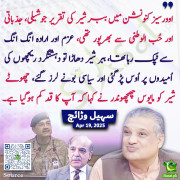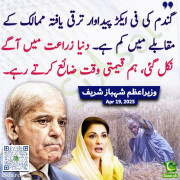Look, I know exactly why you people use the word "Fitna" — and it’s nothing new. Let me explain.
“Fitna” wasn’t just a political label — it was a psychological and religious framing designed to demonize Imran Khan and morally delegitimize his movement. It was meant to paint him not merely as a political opponent but as a
threat to the moral and religious order — an “agent of chaos” in Islamic terms.
This term gained traction among PDM (brought to power via the infamous “London Plan”) after the
false flag operation of 9 May 2023, when the establishment and its media proxies pushed a single, unified narrative:
Imran Khan and his supporters weren’t just dissenters — they were enemies of the state. The term “Fitna” was then used to justify
crackdowns, censorship, arrests, and even
military court trials for civilians.
Of course, the establishment has a
long-standing habit of hiding behind Islamic references. In Islamic history, the term “Fitna” is closely linked with the
Khawarij — a group known for rebellion against legitimate Islamic rulers. The aim here was simple:
equate PTI and its supporters with religiously outlawed insurgents.
But what the state deliberately ignores is that PTI is a
mainstream political party, not an armed group. Its members are ordinary, tax-paying citizens — mostly working-class — demanding justice. Labeling them as “Fitna” was a deliberate move to
sidestep democratic norms and due process, and instead justify suppression under a
moral-religious pretext.
Imran Khan campaigned on
justice and anti-corruption. Branding him as “Fitna” was a way to flip the script — to
brainwash the masses into seeing him as a
false messiah or even
Dajjal-like figure in the eyes of religious conservatives. But this narrative
failed to stick, especially in the age of social media.
 Has it happened before? Absolutely. This is textbook Pakistan.
Has it happened before? Absolutely. This is textbook Pakistan.
Let’s take a look:
 Fatima Jinnah (1965)
Fatima Jinnah (1965)
- Branded a “traitor,” “fitna,” and “Indian agent” for daring to run against Field Marshal Ayub Khan.
- State-sponsored mullahs publicly questioned whether a woman could lead in Islam.
- Sound familiar?
 Zulfikar Ali Bhutto (1970s)
Zulfikar Ali Bhutto (1970s)
- Declared “Mujrim-e-Qaum” and “Enemy of Islam.”
- PNA Movement, backed by clerics, accused him of spreading “fitna” through cinema, alcohol, and liberalism.
- Establishment even labeled him “Firaun.”
- He was later hanged in a sham trial, with religious overtones used to justify it.
 Benazir Bhutto (1988–2007)
Benazir Bhutto (1988–2007)
- Smeared as a “Western fitna” and a threat to Islamic values.
- Clergy claimed Islam forbids women rulers.
- Friday sermons were weaponized to paint her as morally corrupt.
 Nawaz Sharif (1999–2017)
Nawaz Sharif (1999–2017)
- Once he turned against the establishment, ISI-linked clerics began calling him the “Fitna of Democracy.”
- Judges labeled him “Godfather” and “Sicilian Mafia”—a secularized version of the same script.
 This is the establishment's playbook — rinse and repeat.
This is the establishment's playbook — rinse and repeat.
Here's how it works:
 Religious/moral delegitimization
Religious/moral delegitimization Fear-mongering via clergy and media
Fear-mongering via clergy and media Censorship and suppression justified under morality
Censorship and suppression justified under morality Mobilize mobs or justify state brutality
Mobilize mobs or justify state brutality Erode trust in popular civilian leadership
Erode trust in popular civilian leadership
 Why does this “Fitna” tactic keep getting recycled?
Why does this “Fitna” tactic keep getting recycled?
Because
it works.
Pakistan is a deeply religious society. They can read arabic, but they have no idea what it means. The
clergy + military + media triangle is the most potent weapon the establishment has. It doesn’t need evidence — just a narrative. Once someone is labeled “fitna,” the public is conditioned to:
- Stay silent
- Justify repression
- Feel moral guilt for supporting them

































